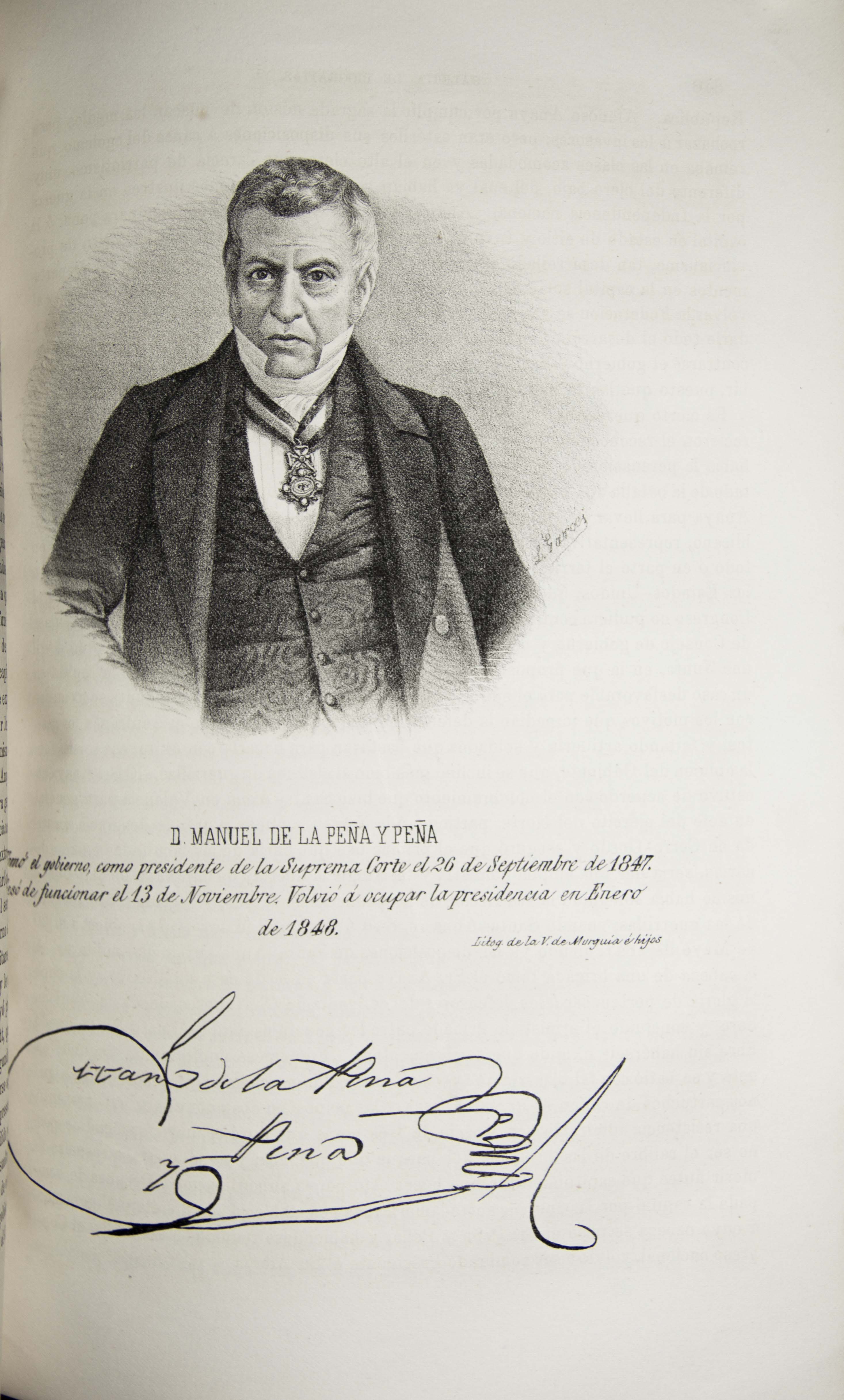Manuel de la Peña y Peña
March 10, 1789—January 2, 1850
Manuel de la Peña y Peña, a lawyer and one of Mexico's early presidents, was born at Tacubaya, a town which is today a part of Mexico City, on March 10, 1789. He was reportedly the son "of a good family though in reduced circumstances."
On December 1811 Peña y Peña was admitted to the bar. Two years later, he began serving as the "sindico of the ayuntamiento." It was "an office he filled so ably that the king appointed him . . . an oidor of the audiencia of Quito in Ecuador" but Peña y Peña declined the appointment, asking instead "to be employed in New Spain."
In 1821, after Mexico won its independence from, Spain, Peña y Peña was given a high position in the territorial audiencia of Mexico. In October 1822 the Emperor Iturbide presented the young councilor of state with the cross of the order of Guadalupe and appointed him minister to Colombia. Before he could leave the country however, Iturbide was overthrown and the appointment did not take effect.
On December 1824 Peña y Peña was elected to the Mexican Supreme Court. In 1837 President Anastasio Bustamente appointed him Minister of the Interior. The following year he was made a member of the newly created Supremo Poder Conservator (Supreme Conservative Power), a governmental body designed to act as a check on the three branches of government. Following Santa Anna's return to power, he participated in framing the Bases Orgánicas, which returned Mexico to centralist rule.
In 1843 Peña y Peña became a senator, an office to which he was re-elected in 1845. During the administration of José Joaquin de Herrera he served as minister of Foreign Relations. In the fall of 1845, when President James K. Polk sent diplomat John Slidell to Mexico to seek the sale of California and New Mexico, it was Peña y Peña, in his role as Mexico's foreign minister, who advised Slidell that the government would not receive him.
On September 26, 1847, after American forces under Gen. Winfield Scott captured Mexico City and the government under Santa Anna collapsed, Peña y Peña assumed the office of interim president, serving until November 13, 1847. On January 8, 1848, following the short-lived presidency of Pedro Maria Anaya, he became president a second time, serving until June 3, 1848. During this time, US diplomat Nicholas Trist and Mexican representatives Bernardo Couto, Miguel de Atristain, and Luis Gonzaga Cuevas negotiated the Treaty of Guadalupe Hidalgo, named for the village outside Mexico City where it was signed on February 8, 1847. Its chief provision was Mexico's agreement to sell, for $15 million, a vast expanse of land that today makes up present-day New Mexico, Arizona, California, Nevada, Utah, and part of Colorado. Mexico also agreed to recognize the Rio Grande as the boundary of Texas, which had been annexed by the United States in 1845.
Peña y Peña died in Mexico City on January 2, 1850 at the age of sixty.
For further reading:
Bancroft, Hubert Howe. The Works of Hubert Howe Bancroft, Volume XIII: History of Mexico, Vol. V, 1824-1861. (San Francisco: The History Company, Publishers, 1887).
Segundo, Tomo. Los Gobernantes de Mexico. (Mexico City: J. M. Aguilar Ortiz, 1873).

